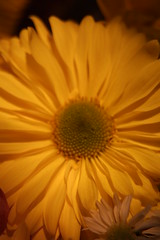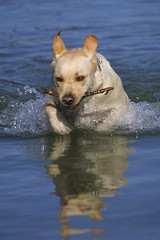The Nikon D50 vs the D70s
When you compare the Nikon D50 vs the D70s, you don't see a lot of differences right off the bat.
These two cameras are extremely similar to each other, but differ in some key ways that are important to advanced amateur photographers.
That's a key point.
If you don't see yourself fiddling with the manual controls a lot, then you really won't tell the difference between the D50 vs the D70s.
But if you've had a film SLR and/or want to take your photography to the next level, then the extra features of the D70s are going to help you on your way.
Feature Comparison
Let's take a closer look at the features of the D50 vs the D70s.
The first part of this table lists common features of digital SLR cameras, and you can see the these two models are quite identical.
The second half illustrates how the two cameras differ — I'll go into the details in just a moment.
| Nikon D50 | Nikon D70s | |
| Megapixels | 6.0 | 6.0 |
| Release Date | 2005 | 2005 |
| ISO Range | 200-1600 | 200-1600 |
| Autofocus | 5-area | 5-area |
| Crop Factor | 1.5 | 1.5 |
| LCD Size | 2.0 | 2.0 |
| Depth of Field Preview | No | Yes |
| Grid Lines | No | Yes |
| Continuous Shot Speed | 2.5 fps | 3.0 fps |
| Max Shutter Speed | 1/4000 | 1/8000 |
| Spot Meter | 1% of frame | 2.5% of frame |
| Memory Card | SD Memory | Compact Flash |
Get all of that? OK, let's dig deeper.
The Differences
This is where we really compare the D50 vs the D70s.
The key benefits of the D70s allow photographers with special needs to capture the types of photos they love.
Depth of Field Preview
The D70s has a depth of field preview while the D50 does not.
Depth of field previews are most useful for macro photographers. When you get up close and personal with your subject, the area in front of and behind the primary subject appears blurry.
This is due to limited depth of field.
You can increase the depth of field by narrowing the aperture on your lens (using the camera to set the aperture to f/11 or f/22).
On the D70s you can preview how this aperture setting will affect your depth of field, and see in the viewfinder exactly how your photo's going to look.
With the D50 it's more of a guessing game.
If you never see yourself manually adjusting the aperture or taking macro shots, then this feature won't help you that much.
Grid Lines
The D70s displays grid lines in the viewfinder while the D50 does not.
Nature and Architecture photographers are plagued by a common problem: getting things to line up.
There are many times where you'll be looking through the viewfinder, get everything level and take the shot. When you look at the photo later, the horizon is noticeably slanted.
The solution to this problem is to have grid lines in the viewfinder. With the grid lines, you line up the horizon (or some other straight edge) with the lines of the grid.
This way you can rest assured that you won't have to rotate all of your photos later on with an image editing program.
Don't see yourself needing grid lines to keep photos level? Then this little extra is something you don't need.
Continuous Shot Speed (Burst Rate)
The D70s has a faster burst rate than the D50.
Burst rate is the friend of the action photographer: it lets you take shots in rapid succession. The faster the burst rate, the more shots you can capture in a second.
Now is a burst rate of 3.0 fps (frames or photos per second) really all that different from 2.5 photos per second?
Not if you're not an action photographer.
But if your joy in life is taking shots of subjects in motion (dirt bikes, kids, dogs, sporting events) then the extra speed is a real benefit.
Max Shutter Speed
The D70s has a faster maximum shutter speed than the D50.
This difference between the D50 vs the D70s is similar to the burst rate: it's only a benefit to action photographers.
When you use a fast shutter speed, you are able to freeze motion: even if a horse is galloping, it will appear to be standing still in your shot.
The benefit of a camera that can take photos at 1/8000th of a second is that you can capture even a drag racer in motion.
If you don't see yourself doing that, then 1/4000th of a second is plenty fast.
Spot Meter
The D70s has a narrower spot meter than the D50.
Digital SLR cameras use their built-in light meters to determine the correct exposure for every shot you take.
This is to ensure that your photos don't turn out horribly over or under-exposed.
The most common meter setting is called evaluative: it is taking in the entire scene and trying to balance both light and dark areas.
In some cases (where the primary subject is backlit) the only way to get a good exposure is to use a spot meter since the evaluative meter will get thrown off by the bright background.
To be truly accurate about it, you don't want the diameter of the spot meter to be very large. This is why the D70s spot meter has a diameter of 2.3mm while the Nikon D50's spot meter has a diameter of 3.5mm.
This makes the D70s a better choice if you take lots of photos in challenging lighting conditions.
Other Differences
There are several other small differences between the Nikon D50 vs D70s, but they are even more picky than the ones listed above.
For example, the D70s has dials on both the front and back of the camera to separately adjust shutter speed and aperture at the same time - incredibly useful only for people who use their digital SLRs in full manual mode.
The D70s allows for the control of multiple flash units - only useful if you're going to get into flash photography with studio strobes.
The D70s has 25 custom functions while the D50 has only...20.
The point is that unless you are an advanced amateur or semi-pro photographer who really wants exceptional control over all of your camera settings, these differences don't set the D70s apart from the D50.
Price
Oh yes, let's not forget this.
The extra features of the D70s will cost you quite a bit more:
| Nikon D50 | Nikon D70s | |
| U.S. Price | $ 680.00 | $ 940.00 |
| UK Price | £ 384.00 | £ 645.00 |
D50 vs D70s Summary
Whew! That was quite a bit of information, so let's sum up.
The D70s is probably worth the extra cost vs the D50 if one or more of the following statements is true:
- I typically uses manual controls
- I enjoy macro photography
- I want to take landscape and/or architecture photos
- I am an action photography enthusiast
- I take photos in challenging lighting conditions
- I want complete control over my digital SLR
If none of these apply to you, stick with the D50 and save your money!
| Digital SLR Home | Zoom Lenses |






